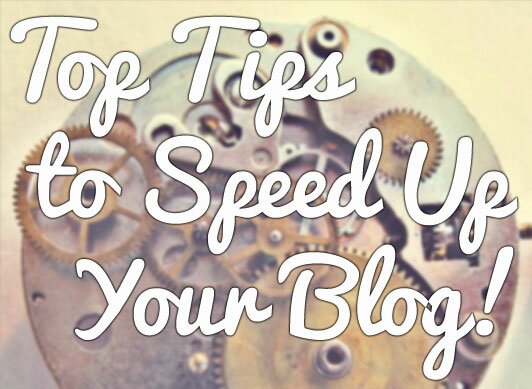
Page load time might be the last thing you think about when managing your blog, but there are some very good reasons why you should really give it some thought. If pages are taking too long to load, packing your blog with stunning imagery and fancy formatting could be hurting your visitor experience, and ultimately your blog’s reputation.
The good thing is that you can still have a beautiful blog with a great page load time, and there are a few things you can do to boost performance! Here are our top techniques to speed up your blog and keep your valued visitors engaged…
1. Know Your Speed!
Before attempting to speed up your blog, find out how quickly your pages currently load by using a tool such as Google’s Page Speed Insights. One of its best features is comparing the speed between desktop and mobile platforms (particularly important with the growth of mobile browsing), as well as advice on what needs improving!
2. Choose the Right Theme
This one’s a biggy. If you choose the wrong theme for your blog, it can have a disastrous effect when it comes to page loading times. I found this out the hard way when choosing a new theme for my Tumblr, but thankfully improved its speed after editing the HTML. If you’re keen to use a theme that might be damaging your page load time, look in to compressing the HTML, and speak with a developer if you need a bit of help!
3. Optimise Your Images
Quick and easy! Optimising your images for use on your blog is one of the simplest ways to improve your page load time. For each image you use, make sure it’s the exact size that you’d like it to appear on screen; if the image is being scaled down, it will take longer to download.
One way of tackling this problem is to open the file in Photoshop, click on Image > Image Size… (Alt + Ctrl + I) and adjust the pixel dimensions to match the size on your blog. Additionally, when saving the image, make sure you choose the optimum file format. You can do this by selecting File > Save for Web… (Alt + Shift + Ctrl + S) and then choosing the most appropriate file type. For example, JPEGs are great for photographs with a variety of colours, and PNGs are perfect for icons and graphics that feature in your blog design.
4. Allow Caching
This is something that will improve page load times for dedicated readers. Allowing your site to cache information on the browsers of your returning visitors will mean there is less new information to download when they come back to your blog! This might seem quite technical at first, but thankfully, W3 Total Cache is a useful WordPress plugin that does the hard work for you.
Hopefully you’ll now feel in control of speeding up your blog’s performance, but this is just the tip of the iceberg, and there are plenty of resources online to help improve your page load time!
What’s your top tip for increasing blog speed? Comment below or get in touch at !

No comments yet.